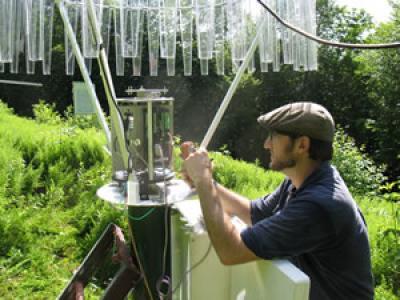DURHAM, N.H., Aug. 5, 2013 – As sensor networks revolutionize ecological data collection by making it possible to collect high frequency information from remote areas in real time, scientists with the U.S. Forest Service are advocating for automated quality control and quality assurance standards that will make that data reliable.
In an article published recently in the journal Bioscience, research ecologists John Campbell and Lindsey Rustad of the U.S. Forest Service's Northern Research Station and colleagues make a case for incorporating automated quality control and quality assurance procedures in sensor networks. The article, "Quantity is Nothing without Quality: Automated QA/QC for Streaming Environmental Sensor Data," is available at: http://www.nrs.fs.fed.us/pubs/43678
"In the not distant future, sensor networks will be the standard technique used to collect data on all kinds of ecosystems," said Michael T. Rains, Director of the Northern Research Station and Acting Director of the Forest Products Lab. "Science is the backbone of land management planning and decision-making, and standard quality procedures are essential to assure that data is not just available, but reliable."
In "Quantity is Nothing Without Quality," Campbell and colleagues discuss reasons why sensors fail and how failures can be minimized or circumvented. They also describe methods for detecting and flagging suspect data and procedures for incorporating corrective measures into data streams. The article suggests best practices and approaches for implementing automated quality assurance/quality control procedures.
As scientists with the Forest Services' Hubbard Brook Experimental Forest in the White Mountains, Campbell and Rustad know the promise and pitfalls of sensor networks.
"Extreme events are typically the most interesting and useful to evaluate, and those are the times when sensors often fail," said Campbell. "Raw data can be misleading if it does not properly characterize an event."

Nicholas Grant, a hydrologist with the US Forest Service, is pictured programming a NOAH IV Total Precipitation Gauge to collect and store total precipitation data every 15 minutes.
(Photo Credit: Ian Halm, U.S. Forest Service)